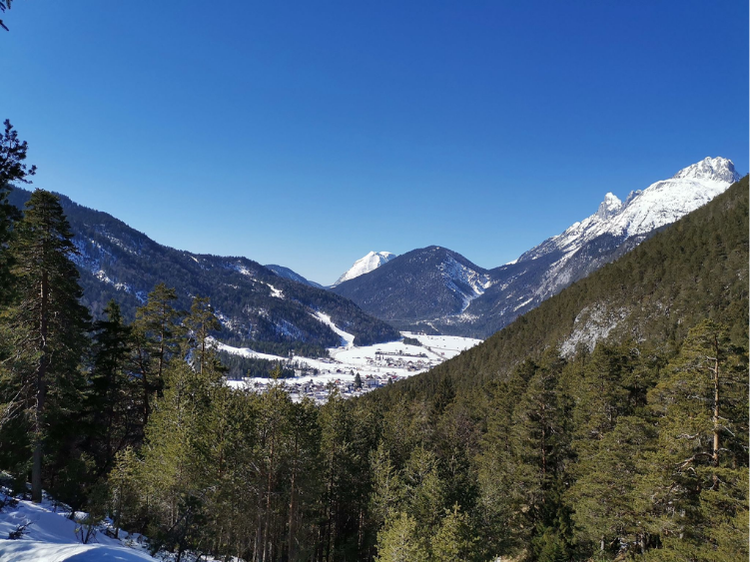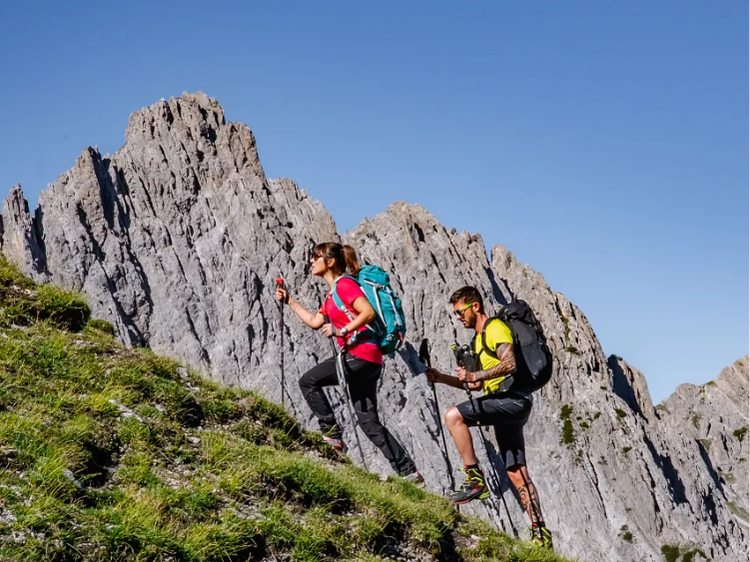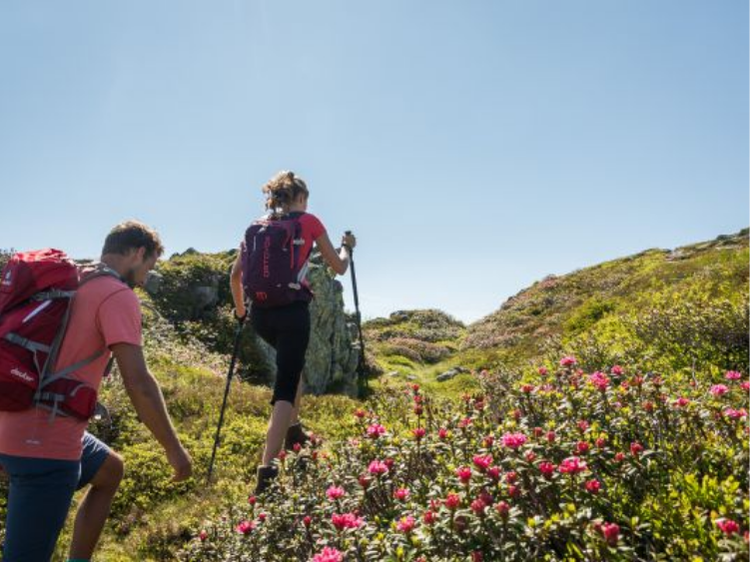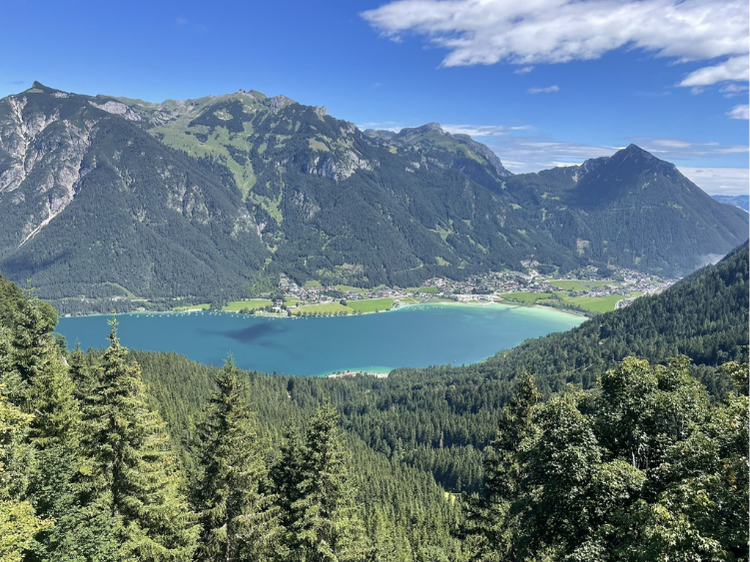
The Karwendel Mountains are not actually located in Bavaria (Bayern), but rather in the Austrian state of Tyrol (Tirol). They form part of the Northern Limestone Alps and are situated to the northwest of Innsbruck, Austria.
The Karwendel Mountains are renowned for their stunning natural beauty, with rugged peaks, deep valleys, and pristine alpine landscapes. The range is a popular destination for outdoor enthusiasts, offering a wide range of activities such as hiking, mountaineering, rock climbing, mountain biking, and skiing.
One notable feature of the Karwendel Mountains is the Karwendel Nature Park, which is the largest nature park in Austria, covering an area of over 700 square kilometers. The park is home to diverse flora and fauna, including rare alpine species such as ibex, chamois, golden eagles, and alpine marmots.
Some of the highest peaks in the Karwendel Mountains include the Birkkarspitze, which rises to an elevation of 2,749 meters (9,019 feet), and the Schlauchkar, which reaches a height of 2,801 meters (9,190 feet). These peaks provide breathtaking panoramic views of the surrounding countryside and are popular destinations for mountaineers and hikers.
The Karwendel Mountains offer a spectacular natural playground for outdoor adventurers and nature lovers alike, drawing visitors from near and far to experience their beauty and tranquility.

The Karwendel Mountains have been around for millions of years, formed by geological processes such as tectonic activity and erosion. They have likely been a prominent feature of the landscape for millennia. However, the term "Karwendel Mountains" itself, referring to this specific range within the Northern Limestone Alps, has been in use for centuries. It's difficult to pinpoint an exact year when it first appeared in historical records, but references to the Karwendel region and its mountains can be found in various documents dating back through the centuries.

The Karwendel Mountains were not "invented" by any individual or group of people. Instead, they are a natural geological feature that formed over millions of years through the processes of tectonic activity, erosion, and other geological forces. The term "Karwendel Mountains" simply refers to this particular mountain range within the Northern Limestone Alps, and it has likely been used by inhabitants of the region for centuries to describe the landscape. Therefore, there is no single inventor or creator associated with the Karwendel Mountains.

The name "Karwendel" is believed to have originated from the Celtic language. It is thought to derive from the Celtic words "kar" meaning "stone" or "rock" and "windel" meaning "circle" or "surrounding," referring to the rugged, rocky terrain of the mountains. Over time, this name evolved into "Karwendel," which became associated with the mountain range.
The Karwendel Mountains are characterized by their rocky peaks, deep valleys, and rugged terrain, making the etymology of the name fitting for the landscape. The name has been in use for centuries and has become the established term for this particular mountain range within the Northern Limestone Alps.





The Karwendel Mountains are a paradise for hiking enthusiasts for several reasons:
1. **Scenic Beauty:** The Karwendel Mountains offer breathtaking scenery, including rugged peaks, deep valleys, pristine alpine lakes, and lush forests. Hiking trails wind through this stunning landscape, providing hikers with awe-inspiring views at every turn.
2. **Diverse Trails:** The region boasts a wide variety of hiking trails, ranging from easy strolls through meadows to challenging ascents up steep mountain paths. Whether you're a beginner or an experienced hiker, there are trails suited to all skill levels and preferences.
3. **Well-Marked Routes:** Hiking trails in the Karwendel Mountains are generally well-marked and maintained, making it easy for hikers to navigate the terrain. Signposts, trail markers, and maps are often available to help guide hikers along their chosen route.
4. **Wildlife Watching:** The Karwendel Mountains are home to a diverse array of flora and fauna, including rare alpine species such as ibex, chamois, marmots, and golden eagles. Hiking in this region provides opportunities for wildlife spotting and nature observation.
5. **Accessibility:** The Karwendel Mountains are easily accessible from nearby towns and cities, such as Innsbruck in Austria and Garmisch-Partenkirchen in Germany. This accessibility makes it convenient for hikers to reach the trails and embark on their outdoor adventures.
6. **Alpine Huts:** Along many hiking routes in the Karwendel Mountains, alpine huts or mountain shelters provide hikers with opportunities to rest, refuel, and even spend the night. These rustic accommodations offer a cozy atmosphere and a chance to connect with fellow hikers.
7. **Outdoor Activities:** In addition to hiking, the Karwendel Mountains offer a wide range of outdoor activities such as mountaineering, rock climbing, mountain biking, and skiing (in the winter months). This diversity of activities allows hikers to customize their outdoor experience according to their interests and preferences.
Overall, the combination of stunning scenery, diverse trails, wildlife encounters, accessibility, and outdoor activities makes the Karwendel Mountains a top destination for hiking lovers seeking adventure in the great outdoors.






While the Karwendel Mountains offer fantastic hiking opportunities throughout the year, the best time for hiking largely depends on your preferences and the specific trails you plan to explore:
1. **Spring (March to May):** Spring is a beautiful time to hike in the Karwendel Mountains as nature awakens from winter. Wildflowers bloom, and the landscape becomes vibrant with color. Trails may still have patches of snow at higher elevations, but lower-altitude trails are usually clear.
2. **Summer (June to August):** Summer is the peak hiking season in the Karwendel Mountains. The weather is generally warm, and the trails are snow-free, allowing hikers to explore higher elevations. Days are long, providing ample time for longer hikes and exploration. However, popular trails can be crowded during this time.
3. **Autumn (September to November):** Autumn brings stunning foliage as the leaves change color, creating a picturesque backdrop for hiking. The weather is still pleasant, but temperatures begin to cool, especially in the higher elevations. Trails are less crowded compared to summer, offering a quieter hiking experience.
4. **Winter (December to February):** Winter hiking in the Karwendel Mountains is possible, but it requires proper preparation and equipment, as trails can be covered in snow and ice. Winter hiking offers a serene experience, with snow-capped peaks and frozen waterfalls creating a magical atmosphere. However, trails may be limited, and avalanche risk should be considered.
Regardless of the season, it's essential to check weather forecasts and trail conditions before embarking on a hike in the Karwendel Mountains. Additionally, hikers should be prepared with appropriate gear, including sturdy footwear, layers of clothing, navigation tools, and sufficient food and water. With proper planning, the Karwendel Mountains offer unforgettable hiking experiences year-round.